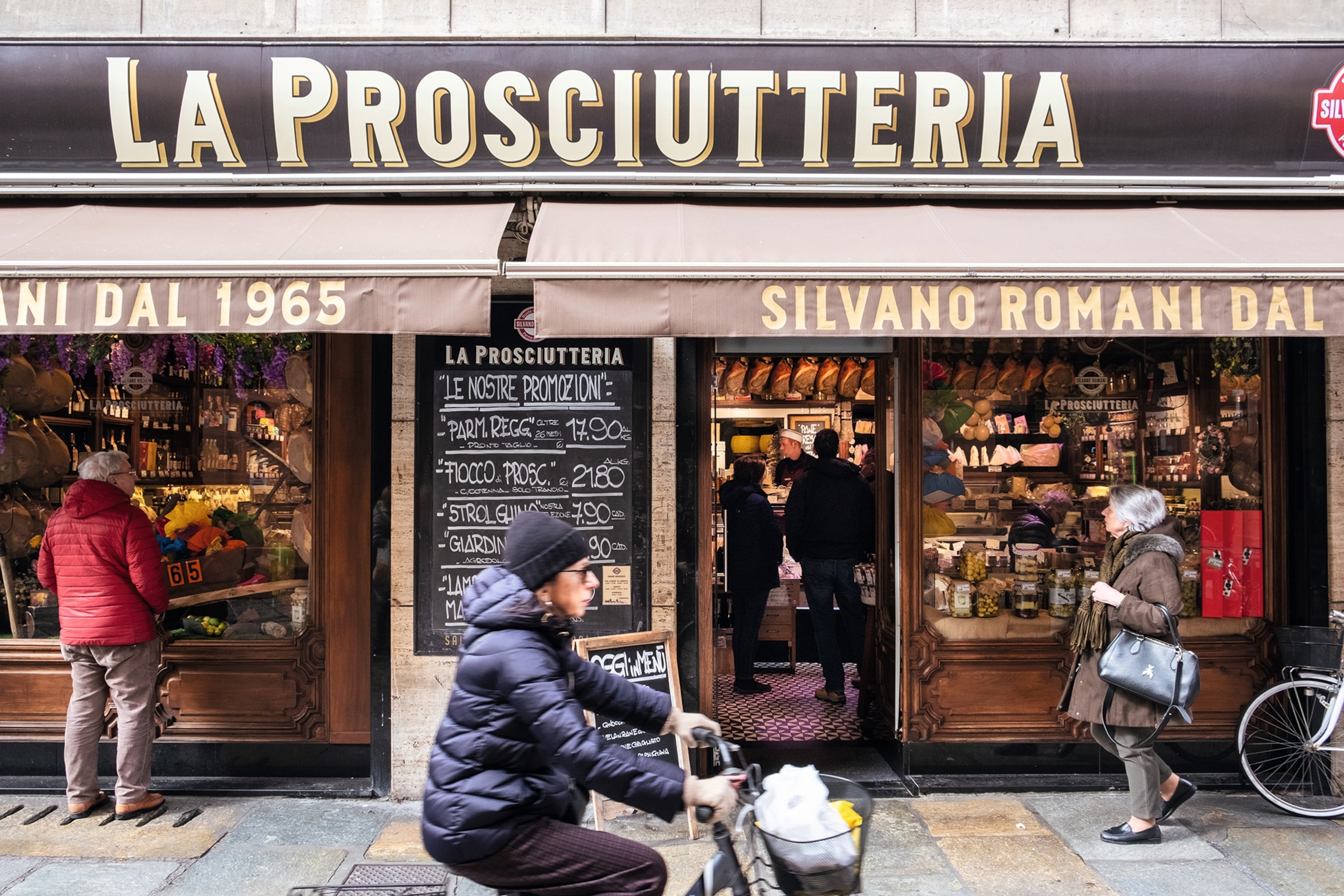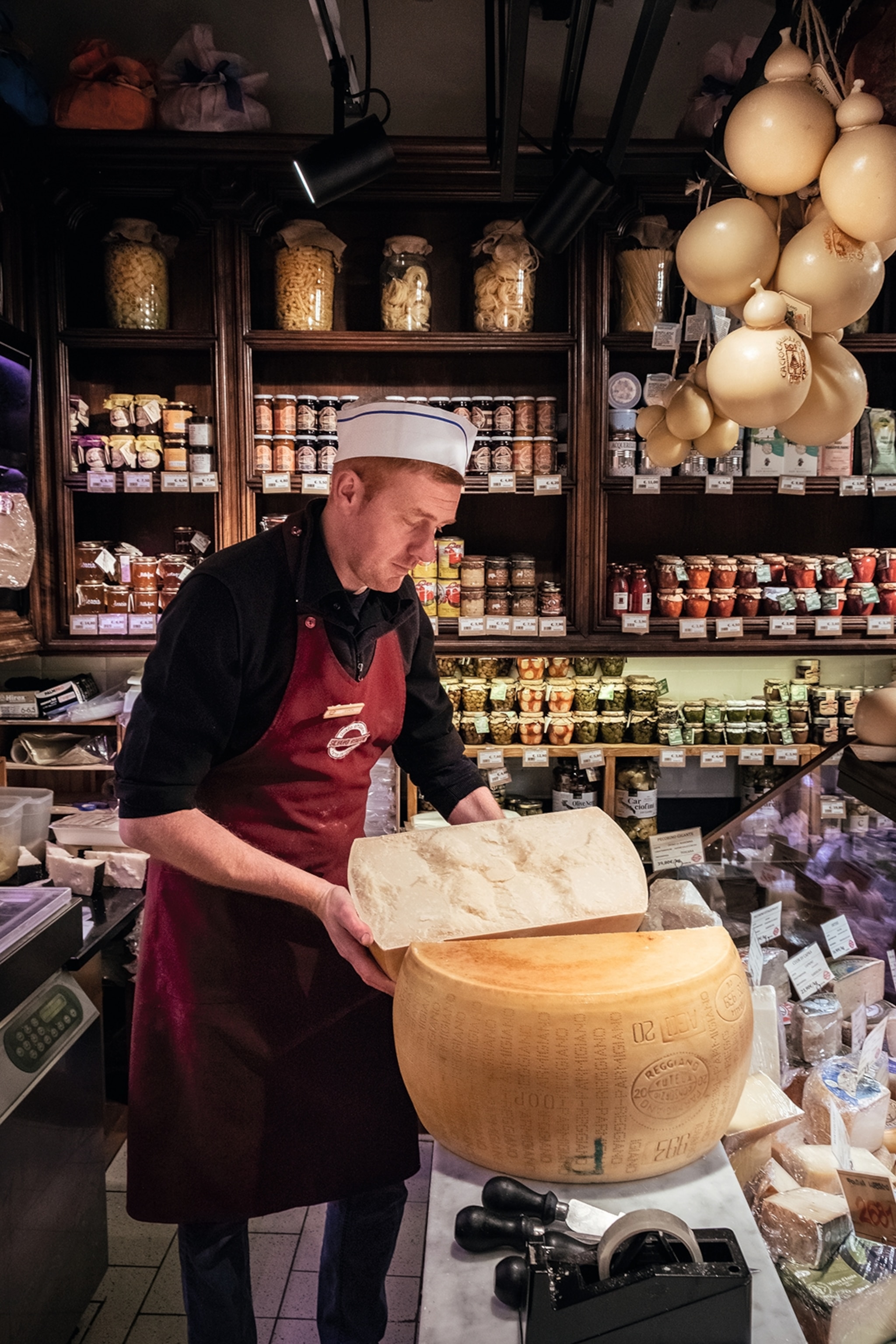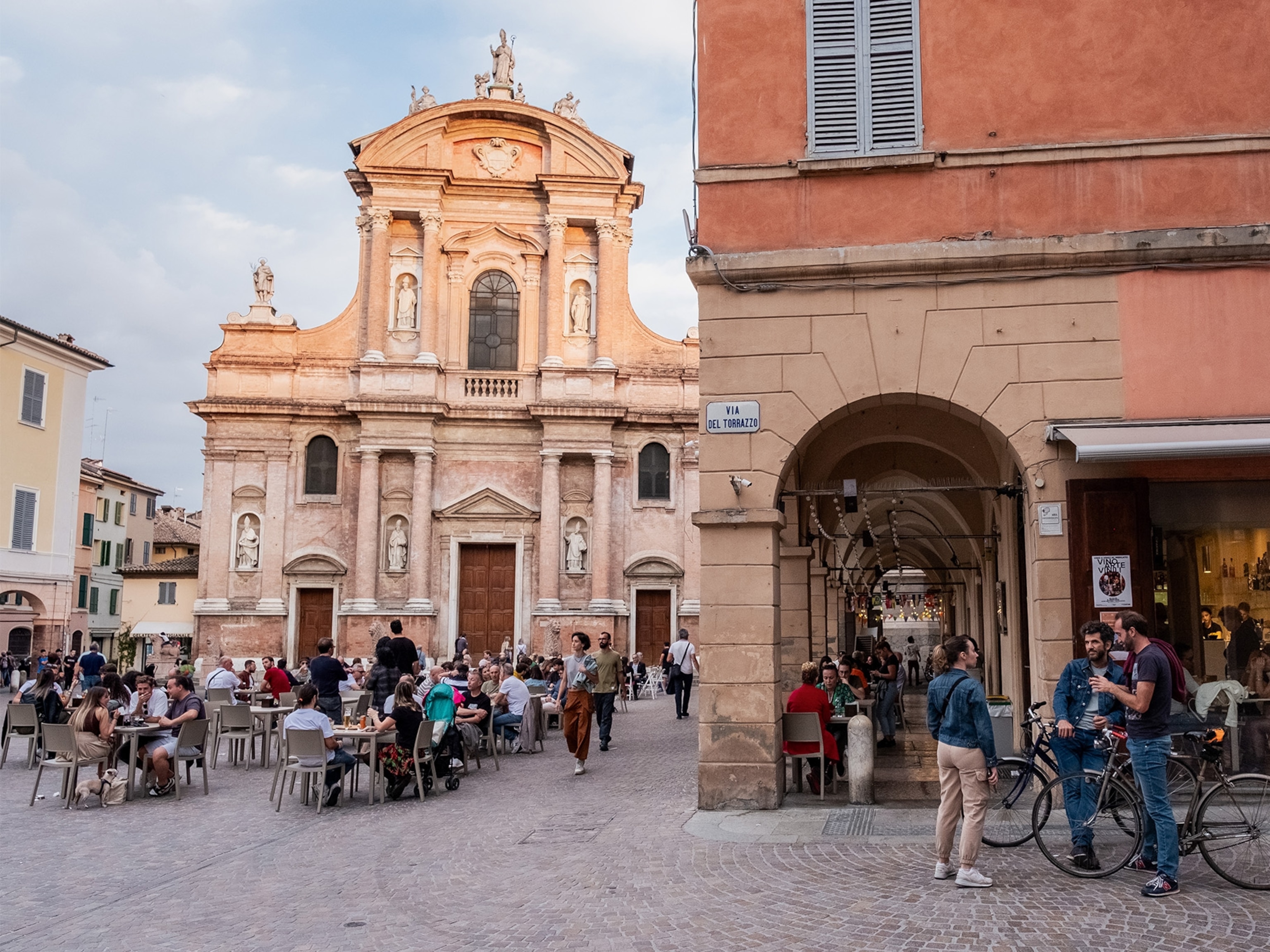
Exploring Emilia-Romagna's gourmet heritage on a city food tour of Parma
The culinary heart of Emilia Romagna offers up the finest cured ham, platters of rich, fruity cheese and a sweet with links to Napoleon.
Peering through the window of La Prosciutteria is like looking at a set design. The stage: Emilia Romagna. The plot: a drama about Italianità — ‘Italianness’. Walloping great ham hocks dangle from the ceiling. Giant wheels of cheese are stacked behind the counter. Salamis are heaped in precarious piles. And, centre stage, elderly ladies are pointing at specific legs of ham, asking for their 100g to be sliced just so.
Welcome to Parma, a city of absolute precision when it comes to food. Midway between Milan and Bologna, below the River Po, for centuries this was a major stop on the Via Emilia — the Roman road from Rimini to Piacenza. Of course, that meant the food had to be good. Maybe it was down to necessity or maybe it was the local ingredients, sourced from its incredibly fertile surrounds, but by some alchemy, Parma (and Emilia Romagna more widely) have come to represent Italian food in the minds of the world.
There’s Parma ham, of course, and Parmesan cheese. Around 35 miles southeast is Modena, the home of balsamic vinegar. And below that is Bologna, famous for tortellini — delicate pasta pockets made since the Renaissance.
In Emilia Romagna, food is history — and few places teach it like Parma. While food tours are increasingly popular, they normally take place outside the city, visiting the producers of cheese, ham and culatello, or ‘little bum’ — cured ham using the rear haunch of the pig, aged in ancient cellars on the banks of the Po.
And while the food on those tours are delicious, you don’t get a feel for the history that created these products in the first place. So I’ve come to Parma itself for a different kind of food tour — one that gives me a taste of the city.
You can tell my guide, Elisabetta Ivaldi, is Parma born and bred. Looking through the window of La Prosciutteria, she explains everything: how a pig’s thigh can divide into prosciutto, culatello and culaccia; how prosciutto was made in winter here until the arrival of the fridge in 1927; how culatello needs humidity while prosciutto, culaccia and fiocco (yet another pork cut) need the dry air of the hills outside Parma.
There’s more. How every kind of salami has a different shape and different casing so they can “breathe differently”. How locals order their prosciutto: “I want this one, aged 20 months, cut from that side — thinly.” She pauses only to answer a man with a burning question: “Is this where they sell the Parmesan from the red cows?” It’s said to be richer, sweeter than regular Parmesan. Of course it is — and of course they sell it here.


The streets are named after the shops that were there for centuries — “They speak,” says Elisabetta on Borgo del Salame. Even the medieval cathedral baptistery has a sculpture of a man preparing salami.
Meat and cheese have been in Parma’s vocabulary since the Middle Ages, but on Strada della Repubblica we fast-forward a few centuries. Parma Violets, those lurid, lavender-coloured sweets I used to spend my pocket money on, were inspired by the real Parma violets, cultivated in the 19th century by Maria Luigia, the Duchess of Parma.
The estranged second wife of Napoleon, who ran the duchy single-handedly, Maria Luigia was a keen botanist, and made these perennial flowers Parma’s signature plant. She had a perfume made from them, sparking an industrial boom. The perfume factories are long gone, but at Parma Color Viola, a blink-and-you’ll-miss-it shop, Carlo Pioli, the ageing descendant of the family behind the Borsari perfumery, is determined to keep the tradition alive. With his wife, Maria Luisa, he grows violets, turning them into perfume, soap, chocolates and their own Parma Violets — real petals, encrusted in sugar.
From a duchess to a prince: Elisabetta’s parting gift is introducing me to Il Principe at Enoteca Fontana, an old-school wine bar. A toasted focaccia layered with prosciutto and slabs of Parmesan, and served with a sparkling local Malvasia to strip the fat from the tongue, it’s the ultimate snack — indeed, the prince of toasties.“Food is our history, our identity,” says Elisabetta approvingly. “Food is Parma.” Between bites, all I can manage is “grazie”.

Kirker Holidays have three nights B&B at the Sina Maria Luigia hotel from £698pp including flights and transfers. Elisabetta Ivaldi has half-day tours from £97.
Sign up to our newsletter and follow us on social media:
Facebook| Instagram | Twitter





